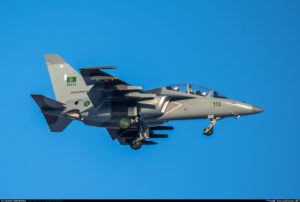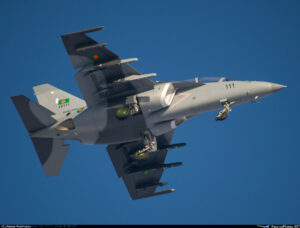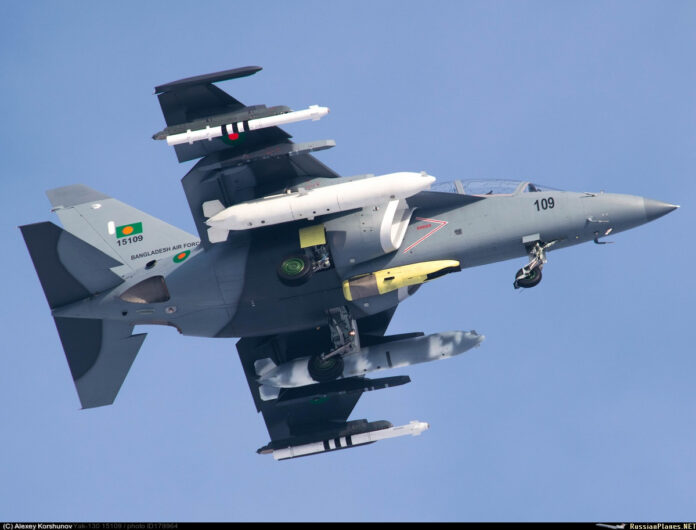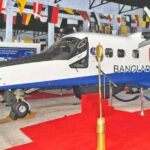- Model: Yak-130
Usage: Primarily used for pilot training, the Yak-130 is also capable of light combat missions.
Origin: Russia
Introduction in Bangladesh: The Bangladesh Air Force has been using the Yak-130 since 2015.
Manufacturer: Developed by Irkut Corporation (formerly Yakovlev Design Bureau). - Features of the Yak-130
The Yak-130 is an advanced, twin-seat training and light combat aircraft equipped with modern technology. Its key features include: - Avionics:
Equipped with an advanced digital avionics system featuring a glass cockpit design.
Includes two multi-function displays (MFDs) and a head-up display (HUD) to assist pilots with critical information. - Engines:
Powered by two Ivchenko Progress AI-222-25 turbofan engines, each providing 5,000 pounds of thrust.
Enables high-speed performance and advanced flight capabilities suitable for training and combat. - Training Capabilities:
Features an advanced simulation system capable of mimicking the flight characteristics of various fighter jets (e.g., MiG-29, Su-27).
Allows versatile training for pilots transitioning to advanced combat aircraft. - Weapon Systems:
Equipped with a 30mm GSh-30-2 cannon.
Can carry a variety of weapons, including rockets, bombs, and air-to-air missiles, with a payload capacity of up to 3,000 kg.
Fly-by-Wire (FBW):Utilizes an advanced fly-by-wire control system, enhancing flight safety and ease of operation.
Speed and Performance:
Maximum speed: Approximately 1,000 km/h (Mach 0.8).
Maximum altitude: 12,000 meters.
Construction:
Built with lightweight and durable composite materials, improving efficiency and durability.
These technological features make the Yak-130 an effective platform for both training and light combat roles. - History of the Yak-130
Origin and Development:
The Yak-130 is a Russian advanced training and light combat aircraft designed and manufactured by Irkut Corporation (formerly Yakovlev Design Bureau). Development began in the 1990s following the dissolution of the Soviet Union, driven by the need for a modern, next-generation training aircraft. The aircraft was first flown experimentally in 1996.
Purpose:
The primary goal of the Yak-130 was to create a versatile training aircraft capable of preparing pilots for advanced jet operations while also being suitable for light combat missions. It is equipped with modern simulators and avionics systems.
Initial Introduction:
The Yak-130 entered service with the Russian Air Force in 2004 and was later exported to several countries.
Introduction in Bangladesh:
In 2015, the Bangladesh Air Force acquired the Yak-130 under a contract that delivered the first six aircraft. These aircraft have significantly enhanced the training capabilities of Bangladeshi pilots and bolstered the country’s defense capabilities.
Global Usage:
The Yak-130 is currently in service with the air forces of several countries, including Russia, Algeria, Belarus, Egypt, Laos, and Bangladesh.
Conclusion:
The Yak-130 is globally recognized for its flexibility and advanced technology, making it a vital asset for both pilot training and light combat operations. Its integration into the Bangladesh Air Force since 2015 has strengthened the country’s aviation training and defense capabilities.
















